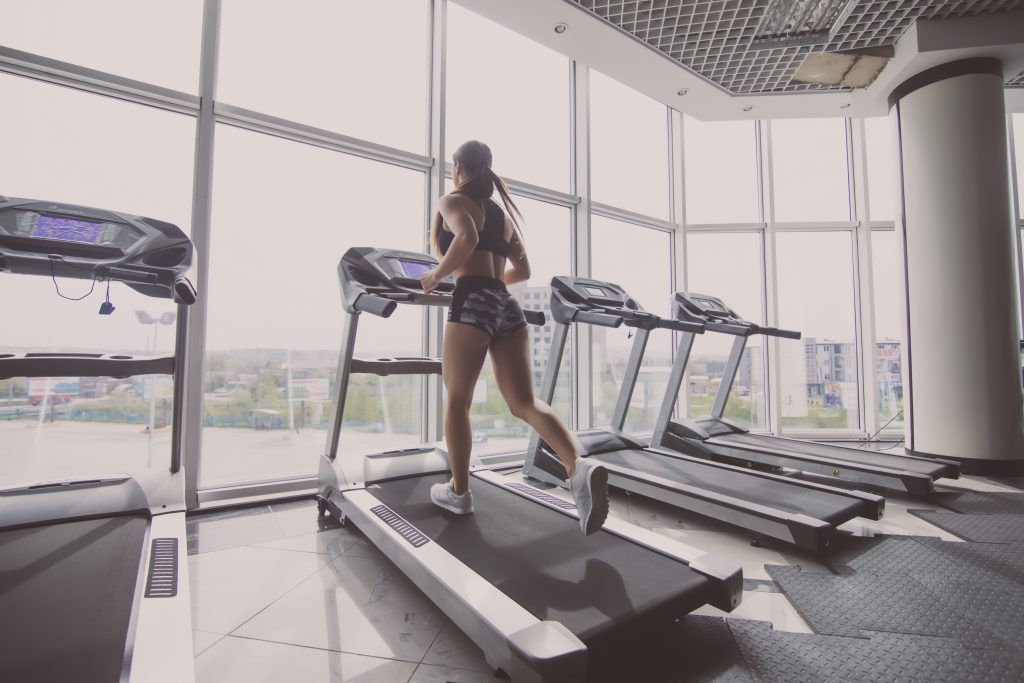Recovering from lower leg, ankle, heel injury using treadmill

A basic concept for treating any repetitive use injury is rest and avoiding the activity; whether it is a running injury or elbow pain from opening too many beer bottles. However for many individuals a period of rest and avoiding the activity can disrupt an active life style, and sometimes adversely affect a career. Individuals who suffer from repetitive use injury are often highly motivated and eliminating or decreasing regular exercise is often not seen as a viable option.
Treating repetitive use injuries requires decreasing the composite value of physical stress. The composite value of physical stress is the magnitude, the time (duration, repetition, rate), and the direction (tension, compression, shear, and torsion) of stress.

Healthcare professionals, coaches, and injured athletes are seeking innovative ways to decrease the composite physical stress level, while being able to continue training and exercising. The following is a discussion of strategies to lower physical stress while allowing the individual to continue exercising while mending from a repetitive use injury to the lower leg (shin), ankle, and heel.
Research has shown walking and running at slower speed and shorter stride to decreases the risk of developing a stress fracture. Reducing stride length decreases the probability of stress fracture by 6%. Reducing running speed decreased probability of stress fracture by 10%. If the goal is to decrease stress without decreasing speed, shorten stride length and increase cadence or turnover.
An intriguing investigation by a group of Israeli researchers used specialized pins designed to directly measure the stress to the leg bones. The specialized pins were stuck in the leg bone while the subjects performed various activities. It is remarkable the researchers were able to find subjects willing to volunteer to participate in such research. They found direct evidence, that there is more stress to the lower leg when jumping than running. They found there was less bone stress in the lower leg when cycling compared to walking and running. They found that treadmill running leads to less bone stress compared to over ground running. Some treadmills are designed to have greater cushioning effect and impart less stress to legs compared to other treadmills. When a choice of different treadmills are available consider “trial testing” the different treadmills to determine which feels cushier, much like you would select which shoe to purchase based on what the shoe feels like.
Using computer modeling of bone stress investigators have shown that running up an incline increases the stress at the hip and knee, but not the stress to the ankle/foot. Running or walking up an incline is a possible method to increase aerobic energy expenditure and training effect without increasing strain to ankle and foot.
A recent patient presented with recurring pain in the lower leg (shin splints). When she ran 8 mph on a level treadmill she complained of shin pain. Raising the incline of treadmill to a 5% grade running again at 8 mph she was able to run without pain. When the incline of the treadmill was returned to level she experienced shin pain. It could be she was able to run up hill without symptoms because running up an incline results in a shorter stride. If running up hill leads to a shorter stride length than the corollary you would expect running downhill could lead to a longer stride length. Running outside consider the tactic of run up hill walk downhill to control shin, ankle, heel pain.
Bottom line if you are recovering from repetitive use injury to the lower leg, ankle, heel:
- Choose to walk/run on treadmill rather than an outdoor surface
- Choose the treadmill which feels softer or more cushy
- Walk/Run with shorter stride
- Walk/Run at slower pace, or walk/run shorter stride faster cadence
- Walk/Run up an incline
Damien Howell Physical Therapy – 804-647-9499 – Fax: 866-879-8591 At-Home, At Office, At Fitness Facility – I come to you, I do home visits Damien@damienhowellpt.com
